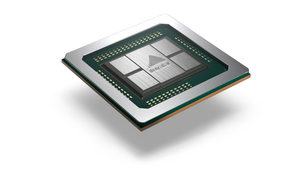Big Island GPU in 7 nm: China is catching up in chip development
Source: Hardware Luxx added 19th Jan 2021We have already reported on the current rapidly advancing development in China’s semiconductor industry. Even though it will take a few more years in production to catch up with the competition, the development of the designs seems to be going much faster.
As the colleagues from Golem (via Toms Hardware) now report that the Chinese company Tianshu Zhixin alias Iluvatar has developed and already had a GPGPU (General Purpose GPU) manufactured that can almost compete with chips from AMD and NVIDIA. The GPU on any graphics card can be referred to as a GPGPU. The micro-architecture is able to make certain calculations. For games and 3D applications, these are FP 32 – and INT 32 – calculations. These have an accuracy of 32 Bit, but can also be expressed in 16 Bit, 8 bit and lower accuracy break up or on 64 Inflate bit. Depending on the design of the pipeline and the front and back end, such non-native computing steps are no longer particularly effective.
Accordingly, a certain trend has developed in the development of GPU accelerators, namely separate designs for gaming and HPC / AI products. NVIDIA uses an adaptation of the Ampere architecture for the GA 100-Accelerator. With the RDNA and CDNA architecture (Radeon Instinct MI 100) also two separate paths with a special design. Ultimately, Intel also provides for different expansion levels and specializations within the Xe families – Xe-LP, Xe-HP, Xe-HPG, Xe-HPC.
But now back to the GPU baptized the Big Island from China: The development should only have started 2018 and in May 2020 the tape-out was done. 7 nm are mentioned as the production size and since there is also talk of 2.5D CoWoS, only TSMC is actually considered as a contract manufacturer. It remains to be seen whether the manufacturing of the GPU will be affected by the threatened sanctions and ban imposed by the US on companies that do business with China and companies in the US. Last reported TSMC to have manufactured far less volume for customers from China.
Big Island should be native with the data formats FP 32, FP 16, Bfloat 01, INT 32, INT 16 and INT8. This covers the typical area of a GPGPU, but for example dispenses with the FP that is important in the HPC segment 64 – calculations. With Bfloat 01 and INT8, the AI formats important for inferencing and training are supported. For FP 16 – calculations Tianshu Zhixin speaks of a computing power of 147 TFLOPS. The Radeon Instinct MI 100 from AMD comes for FP 16 on 185 TFLOPS, NVIDIAs A 096 even manages 312 TFLOPS. So one is not quite at eye level in China yet, but the development steps are considerable.
Tianshu Zhixin does not give any technical details for the Big Island GPU. Four HBM memory chips can be seen next to the central GPU on the chip’s renderings. At least a 4th 64 bit wide memory interface is therefore considered to be secured. Beyond that, we currently know little about the GPU.
The Chinese company is currently supposed to validate its chip so that it can soon be used in various areas of application. China is currently trying to make itself independent from abroad in numerous areas of the semiconductor market. In addition to industry giants such as Huawei, this is also happening through countless other projects. With regard to CPU development, our test of the Zhaoxin KX-U 6780 A showed that the development steps are quite large, but still a lot to do there.
